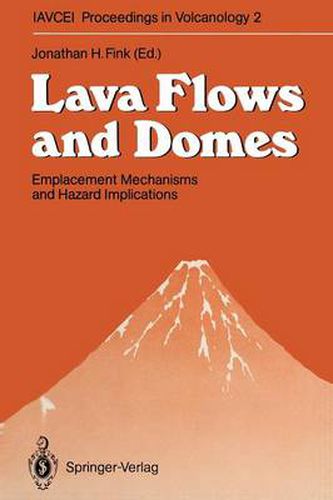Readings Newsletter
Become a Readings Member to make your shopping experience even easier.
Sign in or sign up for free!
You’re not far away from qualifying for FREE standard shipping within Australia
You’ve qualified for FREE standard shipping within Australia
The cart is loading…






This title is printed to order. This book may have been self-published. If so, we cannot guarantee the quality of the content. In the main most books will have gone through the editing process however some may not. We therefore suggest that you be aware of this before ordering this book. If in doubt check either the author or publisher’s details as we are unable to accept any returns unless they are faulty. Please contact us if you have any questions.
This collection of papers is based on a symposium held in 1987 at the Interna tional Union of Geology and Geodesy Congress in Vancouver, British Colum bia. The Symposium was planned as a follow-up to a session at the 1984 Geo logical Society of America Annual Meeting in Reno, Nevada, which dealt with the emplacement of silicic lava domes. In both cases, emphasis was placed on the physical and mechanical rather than chemical aspects of lava flow. The IUGG Symposium consisted of two lecture sessions, a poster session, and two discussion periods, and had 22 participants. The contributions to this volume are all based on papers presented in the various parts of the Sym posium. The motivation for studying lava flow mechanics is both practical and scientific. Scientists and government agencies seek to more effectively predict the hazards associated with active lavas. Recovering mineral resources found in lava flows and domes also requires an understanding of their emplacement. From a more theoretical standpoint, petrologists view lava studies as a way to directly observe the rheologic consequences of mixing crystals, bubbles, and solid blocks of country rock with silicate liquids. This information can then be used to constrain processes occurring in the concealed conduits, dikes, and chambers that feed flows and domes on the surface.
$9.00 standard shipping within Australia
FREE standard shipping within Australia for orders over $100.00
Express & International shipping calculated at checkout
This title is printed to order. This book may have been self-published. If so, we cannot guarantee the quality of the content. In the main most books will have gone through the editing process however some may not. We therefore suggest that you be aware of this before ordering this book. If in doubt check either the author or publisher’s details as we are unable to accept any returns unless they are faulty. Please contact us if you have any questions.
This collection of papers is based on a symposium held in 1987 at the Interna tional Union of Geology and Geodesy Congress in Vancouver, British Colum bia. The Symposium was planned as a follow-up to a session at the 1984 Geo logical Society of America Annual Meeting in Reno, Nevada, which dealt with the emplacement of silicic lava domes. In both cases, emphasis was placed on the physical and mechanical rather than chemical aspects of lava flow. The IUGG Symposium consisted of two lecture sessions, a poster session, and two discussion periods, and had 22 participants. The contributions to this volume are all based on papers presented in the various parts of the Sym posium. The motivation for studying lava flow mechanics is both practical and scientific. Scientists and government agencies seek to more effectively predict the hazards associated with active lavas. Recovering mineral resources found in lava flows and domes also requires an understanding of their emplacement. From a more theoretical standpoint, petrologists view lava studies as a way to directly observe the rheologic consequences of mixing crystals, bubbles, and solid blocks of country rock with silicate liquids. This information can then be used to constrain processes occurring in the concealed conduits, dikes, and chambers that feed flows and domes on the surface.